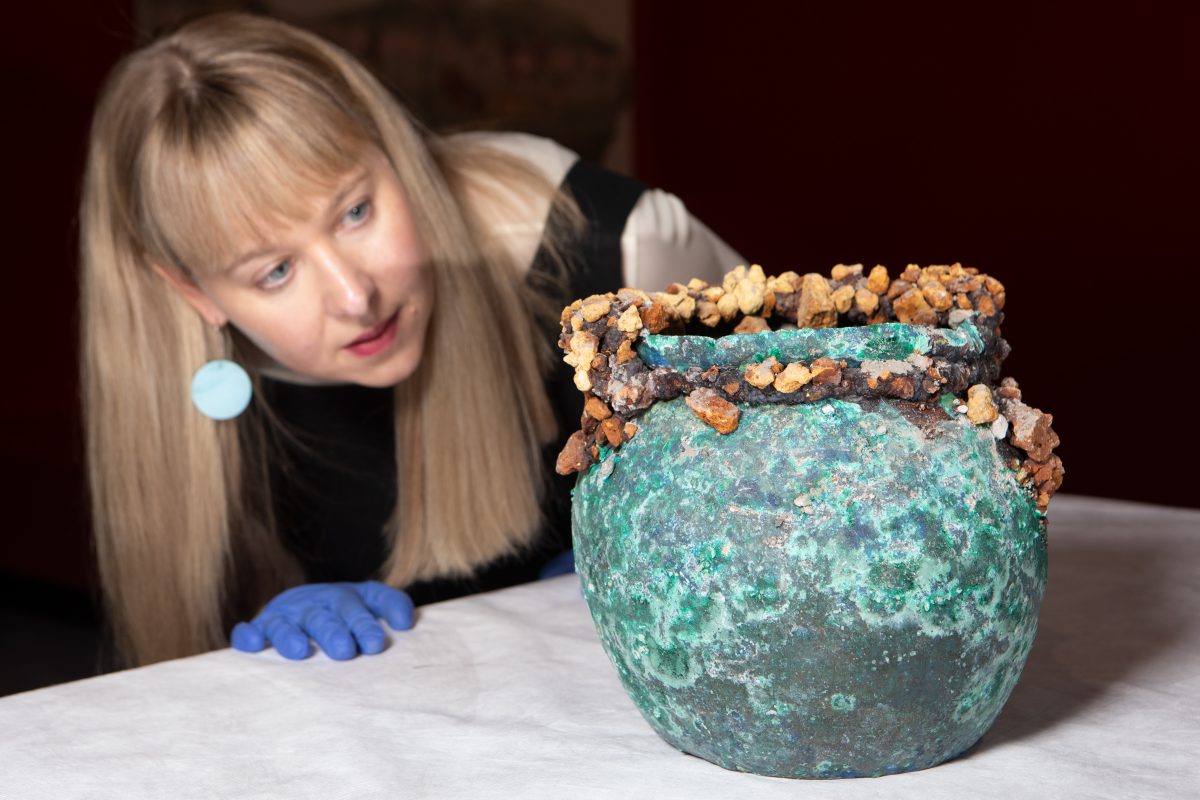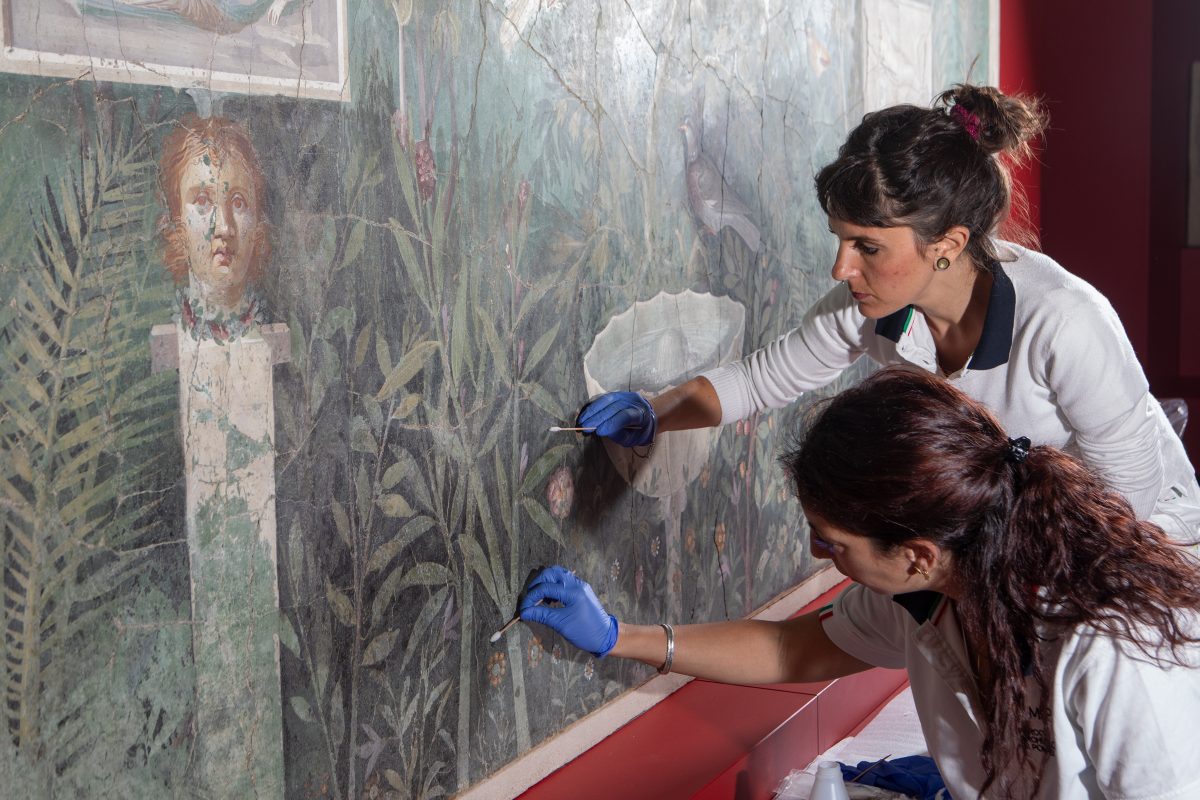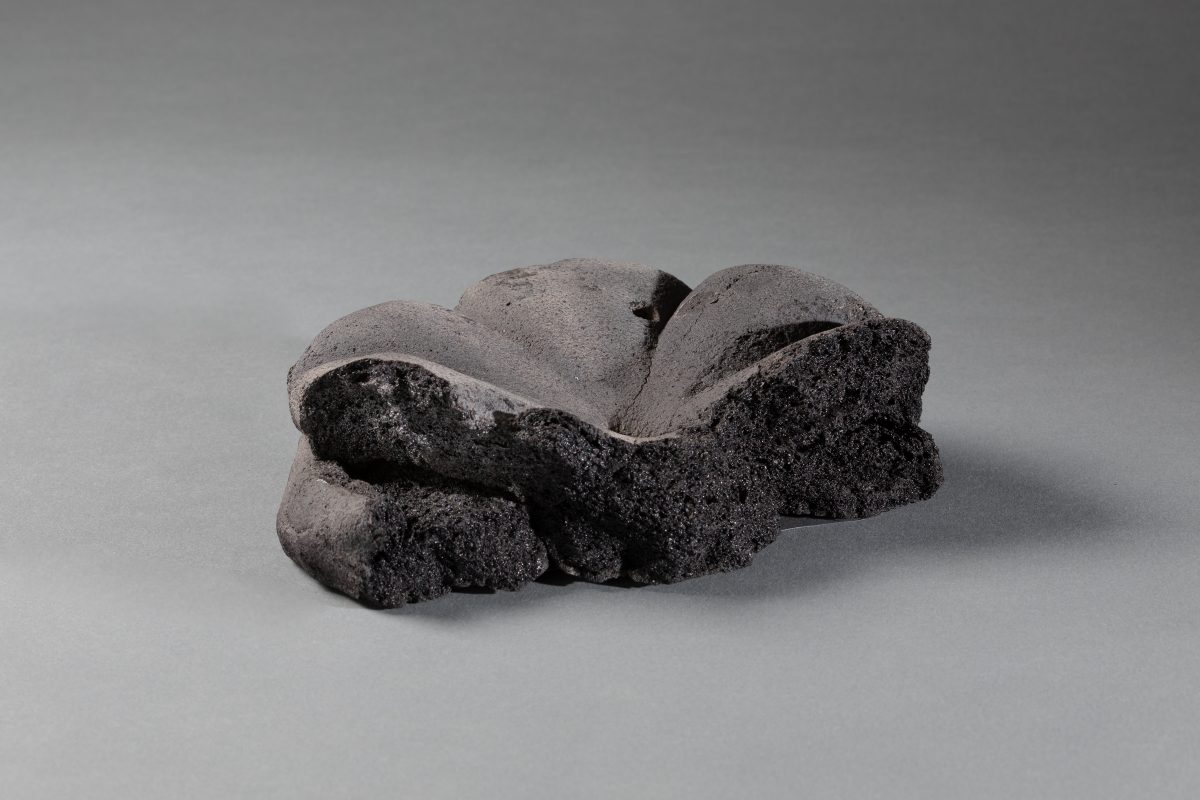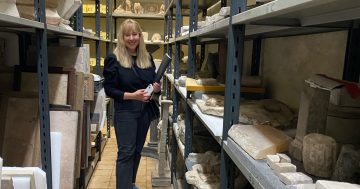
Pompeii exhibition curator Lily Withycombe examines an ancient situla encrusted with dry lava stones from the 2000-year-old eruption. Photo: NMA.
When Lily Withycombe visited the Australian Museum in 1995 to see an exhibition on Pompeii, she had an epiphany.
It’s when her passion for the ancient Roman past came alive in her.
“I remember how the exhibition filled me with awe and wonder,” she said on Thursday – almost 30 years later – at the opening of the Pompeii: Inside A Lost City exhibition, which she curated, now on show at the National Museum of Australia (NMA) in Canberra.
“Seeing that first exhibition set me on a path to study archaeology and this path took me to excavate in Italy for two seasons in Pompeii on a research project.”
Dr Withycombe also travelled to Pompeii earlier this year to hand-select items for the NMA’s exhibition.
She said it was an honour to bring the 90 remarkable objects to Canberra for the first time, rare pieces that survived the volcanic eruption that destroyed Pompeii.
“I loved working on this project because unlike the elite houses that I could read about, and see in museums, we were exploring small modest homes and workshops revealing the domestic and commercial reality of people living here, giving an extraordinary glimpse into ordinary lives.
“These experiences have shaped the way I’ve approached this exhibition.
“These excavations showed me how this ancient city, which was destroyed by a volcanic eruption more than 2000 years ago, lives on as a thriving hub of international cooperation and research.”
Director of the NMA Katherine McMahon said the institution’s role was to bring Australian stories to the world – “and bring the world’s greatest stories here”.

Art conservators Paola Sabbatucci and Ludovica Alesse from the Archaeological Park of Pompeii treat a fresco in the NMA exhibition. Photo: NMA.
“Ancient Pompeii still captures the imagination 2000 years after the destruction,” she said. “It’s a story that passes down the ages and keeps evolving with every new discovery.”
The exhibition not only showcases artefacts from the excavation zone – ranging from gold jewellery to a situla encrusted with dry lava stones, a garden fresco, perfume bottles, tiny dice, cookware and even a lump of carbonised bread – but uses soundscapes and projections to bring it all to life. The volcanic eruption that destroyed the city is recreated, making exhibition visitors feel like they’re there.
“The digital projections and soundscapes, combined with ordinary and extraordinary objects, give visitors an unparalleled glimpse into the everyday lives of the people of Pompeii,” Dr Withycombe said.
“We are not only recreating the ancient city, but directly transporting audiences there. And we are juxtaposing objects with innovative and cutting-edge technologies to tell Pompeii’s story in new and engaging ways.”

This now carbonised lump of bread survived the eruption in Pompeii and is on display in the exhibition. Photo: NMA.
The exhibition is a collaboration between the Archaeological Park of Pompeii in Italy, Grand Palais and GEDEON Experiences in France and the NMA.
Director of the Archaeological Park of Pompeii, Dr Gabriel Zuchtriegel, praised the collaboration.
“We hope it offers visitors a unique educational experience, akin to what one might encounter when visiting the excavations at Pompeii today: the opportunity to step into an exceptionally well-preserved ancient space, to walk its streets, to observe its buildings, to explore public areas and to enter the private homes and the lives of those who inhabited these spaces.”
Pompeii: Inside a Lost City is open at the National Museum of Australia, Canberra, and runs until 4 May, 2025. The NMA is open from 9 am to 5 pm daily, except Christmas Day. Tickets are available on the NMA website.
Original Article published by Sally Hopman on Riotact.










